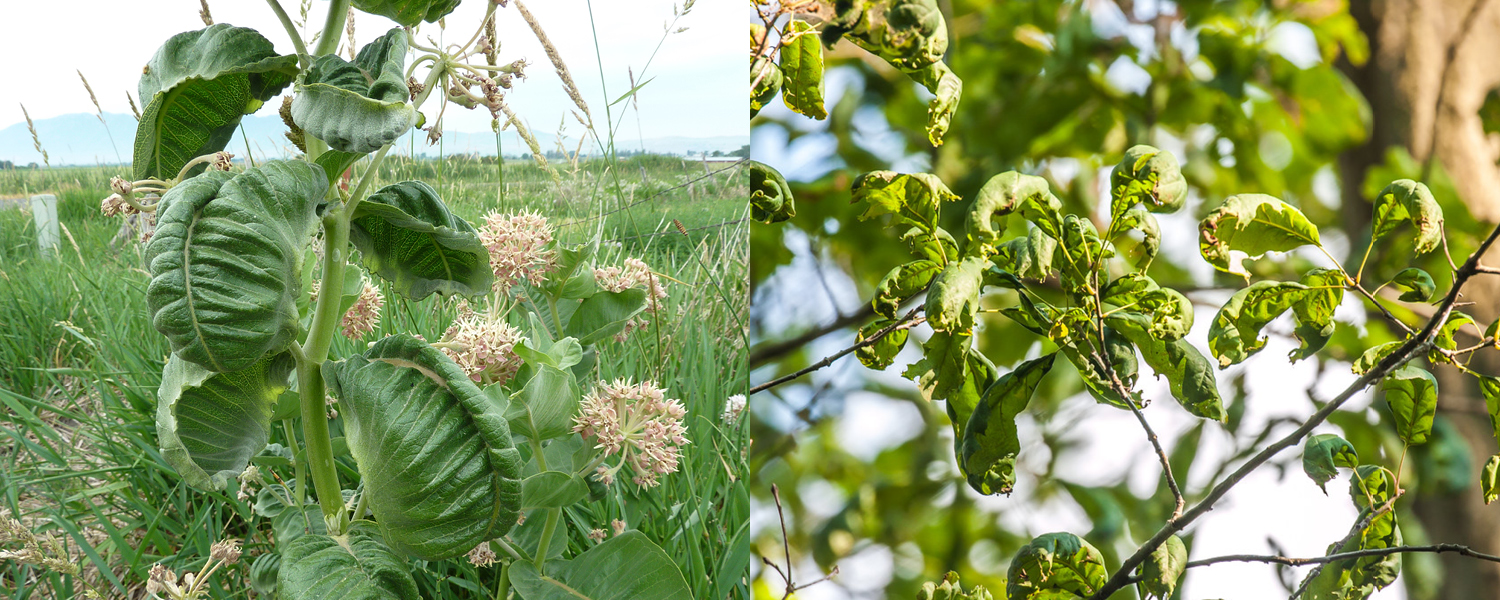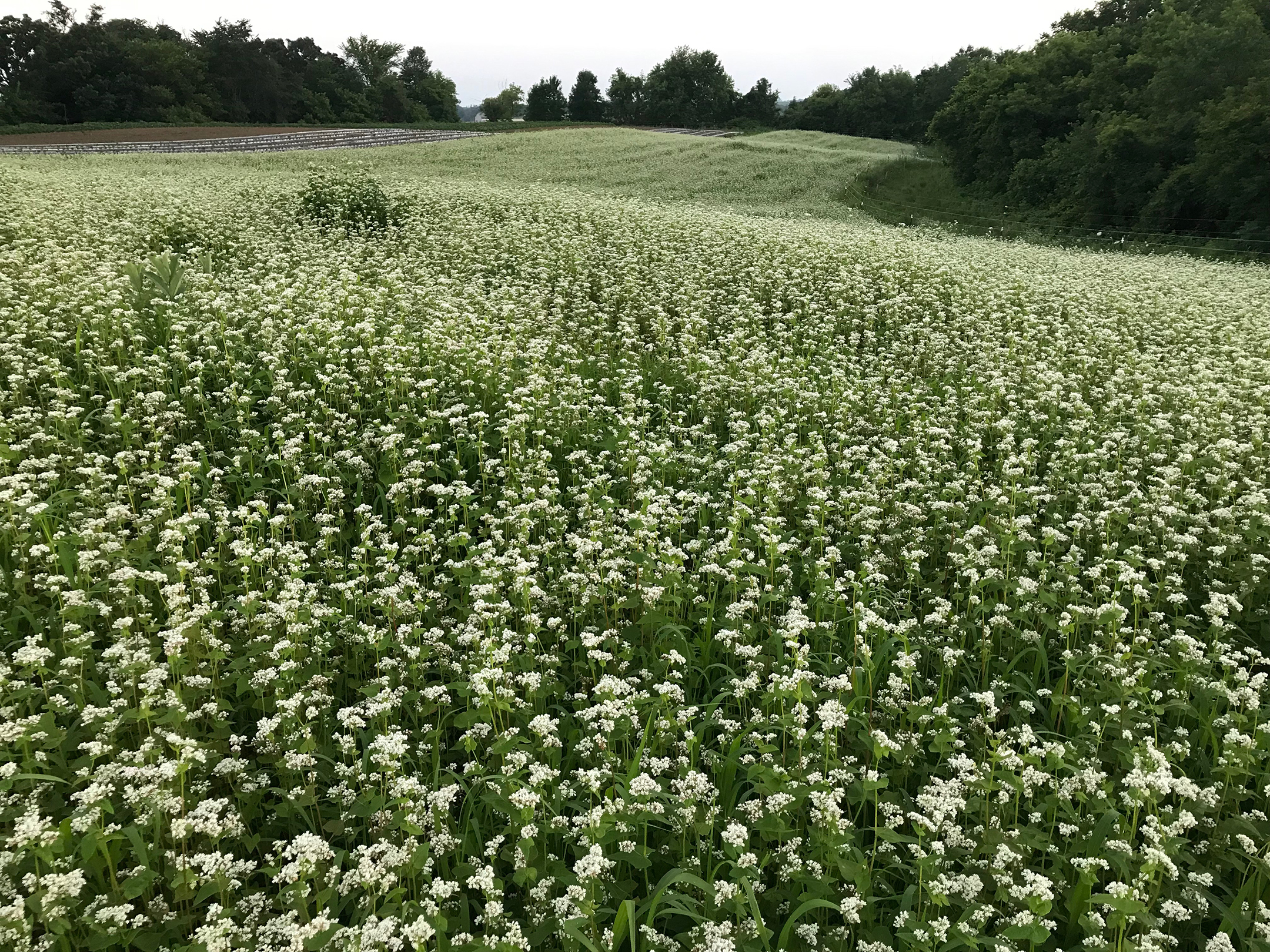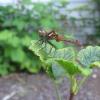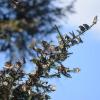As a graduate student in the Midwest, I spent several summers getting to know the pollinators and wild plants that make their homes in the grassy, wooded, and flowering edges of crop fields, from the bumble bees seeking nest sites in early spring to the sweat bees and hairy-banded mining bees rummaging around spikes of goldenrod in late summer. Unmanaged areas near crop fields are important for wildlife in agricultural landscapes, providing food, shelter, and connectivity between larger patches of natural habitat.
It is hard to imagine that these insect habitats that I came to love might already be damaged by herbicide drift. Since 2016, when the US Environmental Protection Agency (EPA) conditionally registered three new dicamba herbicide formulations for use in dicamba-resistant soybean and cotton, more than five million acres of crops—an area roughly the size of New Jersey—have been injured by these herbicides moving off site as drift. Concerned landowners and volunteer monitoring efforts have been raising the alarm about extensive drift damage to wild plant communities across the Midwest and mid-South, but these impacts are significantly under-reported and under-documented.

A distinctive symptom of dicamba contamination is leaf curl, which affects plants small and large. On left is a showy milkweed (Asclepias speciosa), on right a red oak (Quercus rubra), both displaying the impact of dicamba drift. (Photos: left, Xerces Society / Brianna Borders; right, Prairie Rivers Network.)
A new collaborative report from the Xerces Society, National Wildlife Federation, and Prairie Rivers Network, Drifting Toward Disaster: How Dicamba Herbicides are Harming Cultivated and Wild Landscapes, explores what we know and don’t know about the risks to wild plants from dicamba use in agriculture, and how these risks could ripple through numerous food webs, affecting pollinators, birds, and other wildlife. The report also highlights key actions that you can take to help reverse this damaging practice. See links at the end of this article if you’d like to learn more.
One key reason the damage to both crop lands and natural areas is so extensive is because dicamba can move long distances and injure plants at very low rates. Dicamba evaporates easily from plant surfaces after application and can travel through the air in suspended droplets, causing harm to plants even two or three miles away from the site of application. Tiny amounts of dicamba can cause distinctive cupping, curling, twisting, and stunting on a wide range of broadleaf plants, including both wild and cultivated species.
The level of injury to sensitive plants has been unprecedented since the adoption of new herbicide-resistant technologies that allow for the use of these volatile herbicides to continue later into the growing season, when temperatures are higher and dicamba is more likely to volatilize and move off-site. Early reports from 2020 suggest that dicamba injury may be even more widespread this year. Weed scientists from Iowa State University reported that “dicamba injury across the Iowa landscape in 2020 is the most extensive it has been since the introduction of dicamba in the 1960s.”

Vegetation on field borders can provide valuable wildlife habitat and support beneficial insects that pollinate crops as well as control pests. (Photo: Xerces Society / Mace Vaughan.)
The new in-crop formulations of dicamba have not gone unchallenged. In June 2020, a federal appeals court vacated the conditional registrations for three of the new dicamba herbicides, stating that EPA’s approval of them “substantially understated” or “entirely failed to acknowledge” multiple risks associated with dicamba. While unregistered products generally cannot be legally sprayed on crops or sold for use, the EPA’s cancellation order allowed for use of existing stocks of the three herbicides through July 2020. Despite this court ruling, along with a recent $400 million settlement that compensates farmers for dicamba-related crop damage, the manufacturers are pursuing new registrations for these products from the EPA for the 2021 growing season.
The new report outlines a few short-term and long-term recommendations at the federal and state levels for reducing environmental harm from dicamba and for promoting increased research into and adoption of integrated weed management systems to reduce reliance on herbicide-only weed control.

Cover cropping with plants such as annual buckwheat (Fagopyrum) provide an effective alternative to herbicides for weed control on farmland. (Photo: Xerces Society / Karin Jokela.)
What Can You Do to Help?
- Submit a comment to the US Environmental Protection Agency to recommend that the agency:
- Does not renew over-the-top product registrations unless and until independent research shows with certainty that dicamba formulations will not cause off-target injury to crops and wild plants, including from vapor drift.
- Perform a full risk assessment for dicamba for animal and plant species listed under the Endangered Species Act, migratory birds, native pollinators, and aquatic life that includes direct and indirect effects from exposure to dicamba due to drift, volatilization, and runoff.
- Monitor, document, and report symptoms of herbicide injury to flowering plants and trees to your state Department of Agriculture or Pesticide Regulatory Agency. See this Prairie Rivers Network photo library for examples of herbicide injury symptoms, and this example reporting form from the Minnesota Department of Agriculture for an idea of the information to have on hand before submitting a complaint.
- If you grow more than half an acre of fruits and vegetables or keep honey bees, register your specialty crop fields or apiaries with FieldWatch, which pesticide applicators are required to consult before applying the new formulations of dicamba herbicides.
Further Reading
Read the entire report, Drifting Toward Disaster: How Dicamba Herbicides are Harming Cultivated and Wild Landscapes
Learn more about Xerces’ Pesticide Reduction Program
Learn about the risks of pesticides: Understanding Pesticides
Find other publications from Xerces related to pesticides




